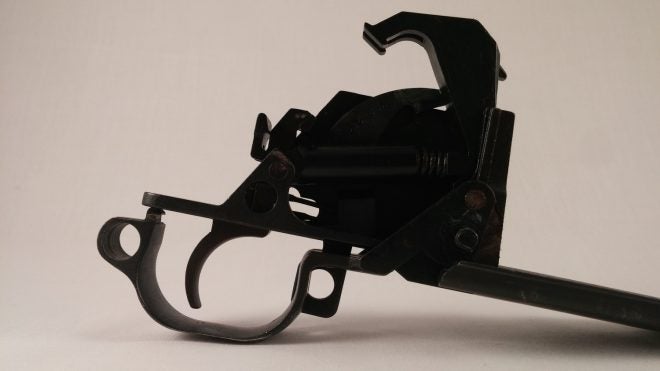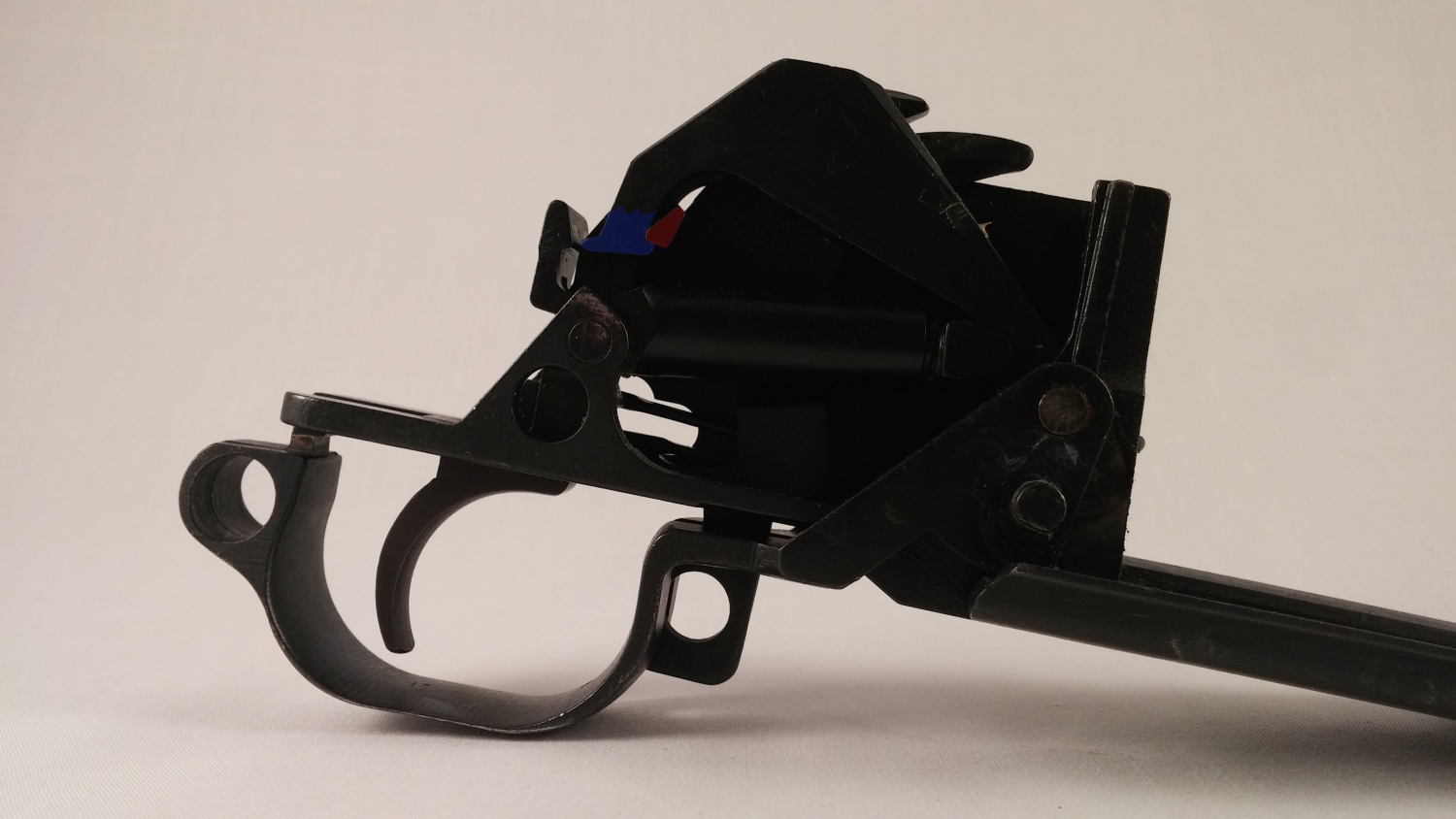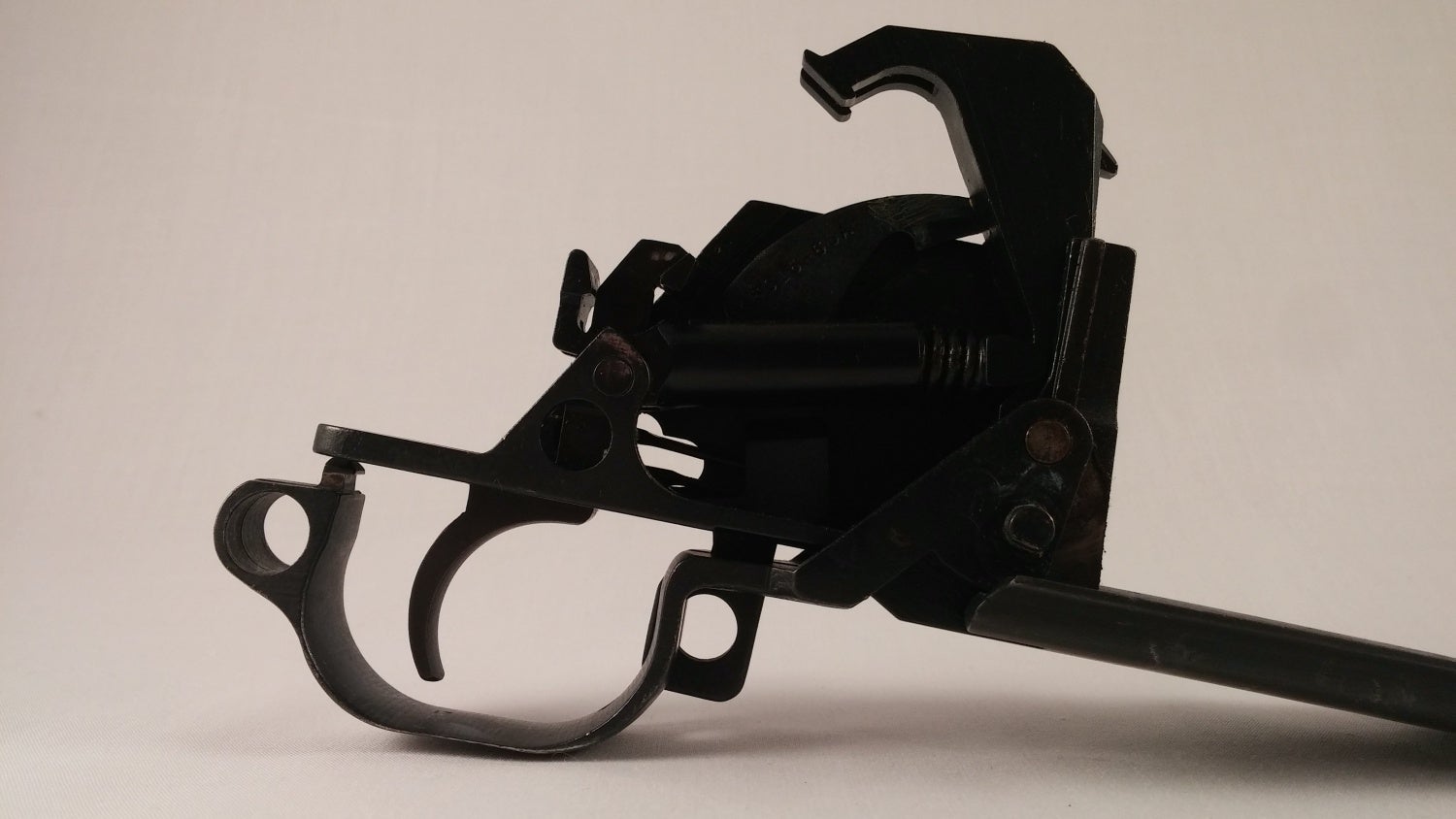In the first post of the 101 level series on firearms operating systems, we briefly described what the word cycle means in terms of the operation of automatic firearms. However, there’s a lot more to the cycle of an automatic firearm than just the completion of one round of firing, so let’s take the time to explore the concept a little more deeply.
In closed-bolt firearms, the first step of the operating cycle is firing. For the purposes of this article and the sake of brevity, we will focus only on all-mechanical systems for firing percussion primed ammunition, but please note that all-electrical and hybrid electro-mechanical systems also do exist (and in autocannons, for example, are quite common).
Firing is accomplished by the fire control group, which holds in reserve some kind stored energy – in small arms this is virtually always mechanical potential energy stored as tension on a spring – which is coupled to a transfer device, again usually a mechanical mass driver. The spring’s tension bears against the mass driver, impelling it to move to transfer its energy to the firing pin, but the mass driver is held back from moving by a catch, called a sear. Once firing is triggered, the catch moves out of position and mass driver is released forward. Exactly what happens next depends on whether the firearm in question uses a hammer-fired or striker-fired firing system.
In a hammer-fired mechanism, the mass driver (called a hammer) is not linked to the firing pin, and slams forward against the base of the pin, transferring its momentum to the pin and sending it forward, where it strikes the primer. However, in a striker-fired mechanism, the mass driver and firing pin are the same piece (called a striker), which is physically held to the rear by the sear, and then released upon triggering. Hammer-fired mechanisms almost always use a rotary hammer, which moves about an axis, but linear hammers which move in a straight line also exist, the most notable example of this being found in the Czech vz. 58 rifle. The reverse is also true for strikers, by far the most common type are linear designs, but more novel configurations such as the H&K G11’s corkscrew rotary striker also exist.
In this M1 trigger pack, the hammer is cocked and held to the rear by its hook (blue) against the sear (red):
After firing the hammer can rotate upwards, transferring its momentum to the firing pin:
 Your Privacy Choices
Your Privacy Choices


